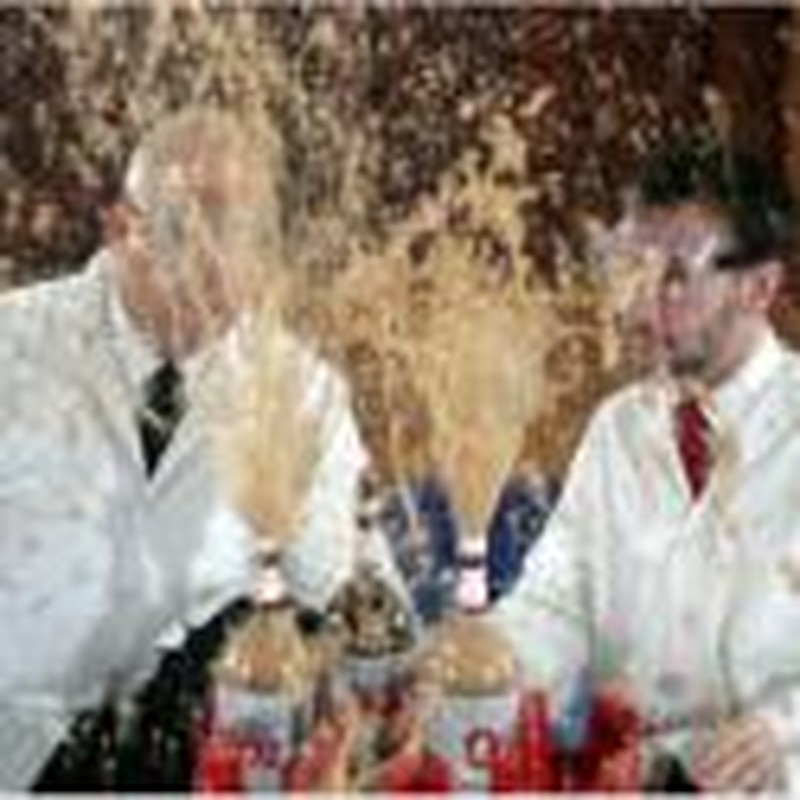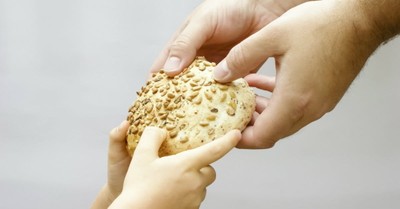Diet Coke and Mentos: What’s Really Going On?
- Dr. Jay L. Wile The Old Schoolhouse
- Published Nov 30, 2009

By now I expect you have seen a video of someone putting Mentos candies into an open bottle of Diet Coke. Almost immediately, a plume of foam shoots out of the bottle and into the air. While watching a "Mentos fountain" is interesting, it is significantly more interesting to investigate the process to find out exactly what happens when Mentos and Diet Coke are mixed together.
With that in mind, let's do an experiment. You will need to do it outdoors while wearing old clothes, as it is incredibly messy. To perform the experiment, you will need:
· Safety goggles (available at a hardware store)
· A few rolls of Mentos mint candies (You need at least 35 individual pieces of candy.)
· One package of another brand of mint candy
· Salt
· Four 2-liter bottles of Diet Coke
· One 2-liter bottle of regular Coke
· One 2-liter bottle of any other kind of diet soda
· One 2-liter bottle of a regular version of the soda above
Before you do the experiment, make sure that one of the Diet Coke bottles has been sitting in a refrigerator for several hours so that it is cold. Make sure the other soda bottles are at room temperature.
The first thing you want to do is get a "baseline" against which you will judge all of your trials. Do this by setting a room-temperature Diet Coke bottle in a clear part of your yard. Take off the lid and set it aside. Open one of the rolls of Mentos and put seven candies in your hand. If possible, hold the candies stacked one on top of another, as if they are still in the roll in which they came. If you can't accomplish this, hold them in a way that will allow you to drop the candies into the bottle very quickly. Quickly drop all the candies into the bottle and move away, keeping your eye on the bottle. Estimate how high the fountain of Diet Coke rises.
Once the fountain has died down, taste the Diet Coke that is left in the bottle. It is important to note that as a general rule, you should never taste the results of an experiment. No matter how innocent the ingredients are, mixing them can produce unknown, dangerous effects. Thus, the only time you should taste the results of an experiment is when someone who knows a lot of chemistry tells you to do so!
Using the same number of Mentos candies each time, repeat the experiment with the chilled Diet Coke, the regular Coke, the other diet soda, and the regular version of that same soda. You needn't taste the results of each trial unless you want to. In each case, try to gauge how high the fountain rises compared to the first one you saw.
Once you are done with all those trials, repeat the experiment with one of the bottles of Diet Coke and the other kind of mint. Try to use roughly the same amount of these mints as you used in the experiment with Mentos. Finally, repeat the experiment using salt rather than mints. Don't worry too much about the amount of salt; just use a handful.
Now that all the hubbub is over, it is time to make sense out of the observations you made. Hopefully you found that the combination of Mentos and room-temperature Diet Coke resulted in a high-rising fountain. While most of the other trials produced some kind of fountain, some were far from impressive. What explains all the data you saw in the experiment?
First you have to understand something about one of the important ingredients in soda pop: carbon dioxide (CO2). At room temperature, carbon dioxide is a gas. However, like many gases, it can be dissolved in water. When you dissolve carbon dioxide gas in a drink, it acidifies the drink, giving it a "tang" that it otherwise would not have. That's what we mean when we call drinks like Diet Coke "carbonated beverages." They are simply beverages in which carbon dioxide has been dissolved. If a carbonated beverage loses most of its carbon dioxide, we say that it has gone "flat." Do you remember what the Diet Coke tasted like after the fountain occurred? It probably had a hint of mint in it, but the main thing you should have noticed is that it was flat. What does that tell you? It tells you that the carbon dioxide that was dissolved in the Diet Coke was no longer there.
When a chemist sees bubbles like the ones you saw in the experiment, she understands that a gas is being made. In this case, the gas is carbon dioxide. The "fountain" forms because carbon dioxide is leaving the solution, forming a gas. When the gas forms quickly, pressure builds up, and the gas comes out in a rush, pushing some liquid along with it. So the Diet Coke tasted flat because a lot of its carbon dioxide had left the solution, making the fountain.
Why did the carbon dioxide leave the Diet Coke? The surface of Mentos candies (at least the mint kind) is full of tiny pits. This disrupts the network of water molecules in a carbonated beverage, forcing some of them apart from one another. When that happens, the carbon dioxide molecules are less inclined to stay in solution, because they are no longer surrounded by as much water. The tiny pits on the surface of the Mentos candies are called "nucleation sites," as they are sites where bubbles can form as the carbon dioxide leaves the solution.
Did you notice that the fountain was not nearly as dramatic in the cold Diet Coke as it was in the room-temperature Diet Coke? That's because temperature affects how well water can dissolve a gas. The warmer the temperature, the less effective water is at dissolving the carbon dioxide. Thus, the combination of warmer Diet Coke and Mentos helped to force even more carbon dioxide out of the Diet Coke, resulting in a better fountain.
Now interestingly enough, there are lots of different solids that have pits on their surfaces. Salt crystals have pits on their surfaces, as do most mint candies. However, in your experiment, the salt and the other mint candies probably didn't produce as big a fountain. Finally, the regular (non-diet) sodas you used did not produce as impressive a fountain as the diet sodas. In the end, the combination of Mentos and a diet soda probably made the best fountain. Why is that?
Mentos candies have a lot of gum arabic, which is a type of chemical we call a "surfactant." It tends to reduce the amount of surface tension in water. This makes it even easier for the carbon dioxide to escape. In addition, the aspartame in a diet soda enhances the gum arabic's job. As a result, those two specific ingredients work together to make the fountain spectacular.
Although you had fun and hopefully learned something about sodas and candies as a result of this experiment, there is a more important thing I want you to learn from all of this. The experiment that you did illustrates the way a chemist does trials to determine what is happening in a process he is observing. Notice how I had you do the experiment. You did the first trial as a "baseline" or a "standard." We call this the control of the experiment. That is the "normal" way the process works. Then, you changed one variable at a time to learn more about the process. First, you replaced the room-temperature Diet Coke with chilled Diet Coke. Thus, you changed only the temperature of the soda—nothing else. That told you the effect temperature had on the process. Next, you went back to room temperature, but then you changed the kind of soda. Once again, compared to the control, only one thing changed: the type of soda. When you were done with that, you went back to room-temperature Diet Coke and then changed what you were dropping into it.
Each trial, then, represented only one change from the control of the experiment. You changed either temperature, soda, or what was dropped into the soda, but you did not change more than one of those things at a time. That's the best approach to doing chemistry experiments. If you can change only one variable at a time, you have the best chance of learning what is important in the process you are observing. Remember that as you investigate more of the wonders of chemistry!
*This article published December 2, 2009.
Dr. Jay L. Wile holds an earned Ph.D. from the University of Rochester in nuclear chemistry and a B.S. in chemistry from the same institution. He has won several awards for excellence in teaching and has presented numerous lectures on the topics of nuclear chemistry, Christian apologetics, homeschooling, and creation vs. evolution. He is best known for authoring or co-authoring most of the Exploring Creation with . . . textbooks designed for junior high and high school students who are educated at home.
Copyright 2009. Originally appeared in The Old Schoolhouse Magazine, Fall 2009.
Used with permission. Visit them at www.TheHomeschoolMagazine.com. For all your homeschool curriculum needs visit the Schoolhouse Store.
Subscribe now to The Old Schoolhouse Magazine for only $7.95!-U.S. only- Use code SUB795 at checkout. Good until January 2010. Get 4 issues for almost the price of 1.



















